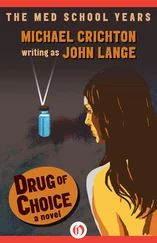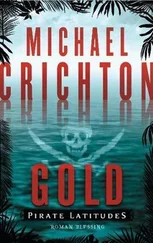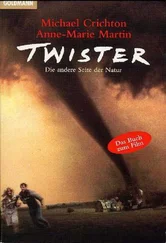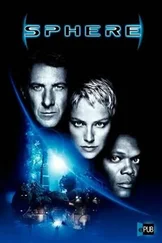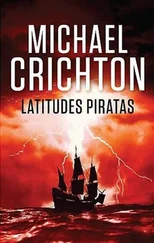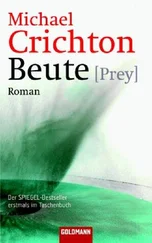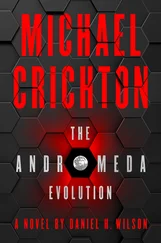Michael Crichton - Jurassic Park
Здесь есть возможность читать онлайн «Michael Crichton - Jurassic Park» весь текст электронной книги совершенно бесплатно (целиком полную версию без сокращений). В некоторых случаях можно слушать аудио, скачать через торрент в формате fb2 и присутствует краткое содержание. Жанр: Детская проза, на английском языке. Описание произведения, (предисловие) а так же отзывы посетителей доступны на портале библиотеки ЛибКат.
- Название:Jurassic Park
- Автор:
- Жанр:
- Год:неизвестен
- ISBN:нет данных
- Рейтинг книги:4 / 5. Голосов: 2
-
Избранное:Добавить в избранное
- Отзывы:
-
Ваша оценка:
- 80
- 1
- 2
- 3
- 4
- 5
Jurassic Park: краткое содержание, описание и аннотация
Предлагаем к чтению аннотацию, описание, краткое содержание или предисловие (зависит от того, что написал сам автор книги «Jurassic Park»). Если вы не нашли необходимую информацию о книге — напишите в комментариях, мы постараемся отыскать её.
Jurassic Park — читать онлайн бесплатно полную книгу (весь текст) целиком
Ниже представлен текст книги, разбитый по страницам. Система сохранения места последней прочитанной страницы, позволяет с удобством читать онлайн бесплатно книгу «Jurassic Park», без необходимости каждый раз заново искать на чём Вы остановились. Поставьте закладку, и сможете в любой момент перейти на страницу, на которой закончили чтение.
Интервал:
Закладка:
"Huh," the technician said. "Looks eaten."
"Yes, it does," Stone said. "What do they want with us?"
The technician consulted the enclosed documents. "Lizard is biting local children. They have a question about identification of the species, and a concern about diseases transmitted from the bite." She produced a child's picture of a lizard, signed TINA at the top. "One of the kids drew a picture of the lizard."
Stone glanced at the picture. "Obviously we can't verify the species," Stone said. "But we can check diseases easily enough, if we can get any blood out of this fragment. What are they calling this animal?"
" 'Basiliscus amoratus with three-toed genetic anomaly,' " she said, reading.
"Okay," Stone said. "Let's get started. While you're waiting for it to thaw, do an X-ray and take Polaroids for the record. Once we have blood, start running antibody sets until we get some matches. Let me know if there's a problem."
Before lunchtime, the lab had its answer: the lizard blood showed no significant reactivity to any viral or bacterial antigen. They had run toxicity profiles as well, and they had found only one positive match: the blood was mildly reactive to the venom of the Indian king cobra. But such cross-reactivity was common among reptile species, and Dr. Stone did not think it noteworthy to include in the fax his technician sent to Dr. Martin Guitierrez that same evening.
There was never any question about identifying the lizard; that would await the return of Dr. Simpson. He was not due back for several weeks, and his secretary asked if the TDL would please store the lizard fragment in the meantime. Dr. Stone put it back in the zip-lock bag and stuck it in the freezer.
Martin Guitierrez read the fax from the Columbia Medical Center/Tropical Diseases Laboratory. It was brief: -
SUBJECT: Basiliscus amoratus with genetic anomaly
(forwarded from Dr. Simpson's office)
MATERIALS: posterior segment,? partially eaten animal
PROCEDURES PERFORMED. X-ray, Microscopic, immunological RTX
for viral, parasitic, bacterial disease.
FINDINGS: No histologic or immunologic evidence for any communicable disease in man in this Basiliscus amoratus sample.
(signed)
Richard A. Stone, M.D., director
Guitierrez made two assumptions based on the memo. First, that his identification of the lizard as a basilisk had been confirmed by scientists at Columbia University. And second, that the absence of communicable disease meant the recent episodes of sporadic lizard bites implied no serious health hazards for Costa Rica. On the contrary, he felt his original views were correct: that a lizard species had been driven from the forest into a new habitat, and was coming into contact with village people. Guitierrez was certain that in a few more weeks the lizards would settle down and the biting episodes won end.
The tropical rain fell in great drenching sheets, hammering the corrugated roof of the clinic in Bahia Anasco. It was nearly midnight; power had been lost in the storm, and the midwife Elena Morales was working by flashlight when she heard a squeaking, chirping sound. Thinking that it was a rat, she quickly put a compress on the forehead of the mother and went into the next room to check on the newborn baby. As her hand touched the doorknob, she heard the chirping again, and she relaxed. Evidently it was just a bird, flying in the window to get out of the rain. Costa Ricans said that when a bird came to visit a newborn child, it brought good luck.
Elena opened the door. The infant lay in a wicker bassinet, swaddled in a light blanket, only its face exposed. Around the rim of the bassinet, three dark-green lizards crouched like gargoyles. When they saw Elena, they cocked their heads and stared curiously at her, but did not flee. In the light of her flashlight Elena saw the blood dripping from their snouts. Softly chirping, one lizard bent down and, with a quick shake of its head, tore a ragged chunk of flesh from the baby.
Elena rushed forward, screaming, and the lizards fled into the darkness. But long before she reached the bassinet, she could see what had happened to the infant's face, and she knew the child must be dead. The lizards scattered into the rainy night, chirping and squealing, leaving behind only bloody three-toed tracks, like birds.
The Shape of the Data
Later, when she was calmer, Elena Morales decided not to report the lizard attack. Despite the horror she had seen, she began to worry that she might be criticized for leaving the baby unguarded. So she told the mother that the baby had asphyxiated, and she reported the death on the forms she sent to San Jose as SIDS: sudden infant death syndrome. This was a syndrome of unexplained death among very young children; it was unremarkable, and her report went unchallenged.
The university lab in San Jose that analyzed the saliva sample from Tina Bowman's arm made several remarkable discoveries. There was, as expected, a great deal of serotonin. But among the salivary proteins was a real monster: molecular mass of 1,980, one of the largest proteins known. Biological activity was still under study, but it seemed to be a neurotoxic poison related to cobra venom, although more primitive in structure.
The lab also detected trace quantities of the gamma-amino metbionine hydrolase. Because this enzyme was a marker for genetic engineering, and not found in wild animals, technicians assumed it was a lab contaminant and did not report it when they called Dr, Cruz, the referring physician in Puntarenas.
The lizard fragment rested in the freezer at Columbia University, awaiting the return of Dr. Simpson, who was not expected for at least a month. And so things might have remained, had not a technician named Alice Levin walked into the Tropical Diseases Laboratory, seen Tina Bowman's picture, and said, "Oh, whose kid drew the dinosaur?"
"What?" Richard Stone said, turning slowly toward her.
"The dinosaur. Isn't that what it is? My kid draws them all the time."
"This is a lizard," Stone said. "From Costa Rica. Some girl down there drew a picture of it."
"No," Alice Levin said, shaking her head. "Look at it. It's very clear. Big head, long neck, stands on its hind legs, thick tail. It's a dinosaur."
"It can't be. It was only a foot tall."
"So? There were little dinosaurs back then," Alice said. "Believe me, I know. I have two boys, I'm an expert. The smallest dinosaurs were under a foot. Teenysaurus or something, I don't know. Those names are impossible. You'll never learn those names if you're over the age of ten."
"You don't understand," Richard Stone said. "This is a picture of a contemporary animal. They sent us a fragment of the animal. It's in the freezer now." Stone went and got it, and shook it out of the baggie.
Alice Levin looked at the frozen piece of leg and tail, and shrugged. She didn't touch it. "I don't know," she said. "But that looks like a dinosaur to me."
Stone shook his head. "Impossible."
"Why?" Alice Levin said. "It could be a leftover or a remnant or whatever they call them."
Stone continued to shake his head. Alice was uninformed; she was just a technician who worked in the bacteriology lab down the hall. And she had an active imagination. Stone remembered the time when she thought she was being followed by one of the surgical orderlies…
"You know," Alice Levin said, "if this is a dinosaur, Richard, it could be a big deal."
"It's not a dinosaur."
"Has anybody checked it.
"No," Stone said.
"Well, take it to the Museum of Natural History or something," Alice Levin said. "You really should."
"I'd be embarrassed."
"You want me to do it for you?" she said.
"No," Richard Stone said. "I don't."
"You're not going to do anything?"
Читать дальшеИнтервал:
Закладка:
Похожие книги на «Jurassic Park»
Представляем Вашему вниманию похожие книги на «Jurassic Park» списком для выбора. Мы отобрали схожую по названию и смыслу литературу в надежде предоставить читателям больше вариантов отыскать новые, интересные, ещё непрочитанные произведения.
Обсуждение, отзывы о книге «Jurassic Park» и просто собственные мнения читателей. Оставьте ваши комментарии, напишите, что Вы думаете о произведении, его смысле или главных героях. Укажите что конкретно понравилось, а что нет, и почему Вы так считаете.

